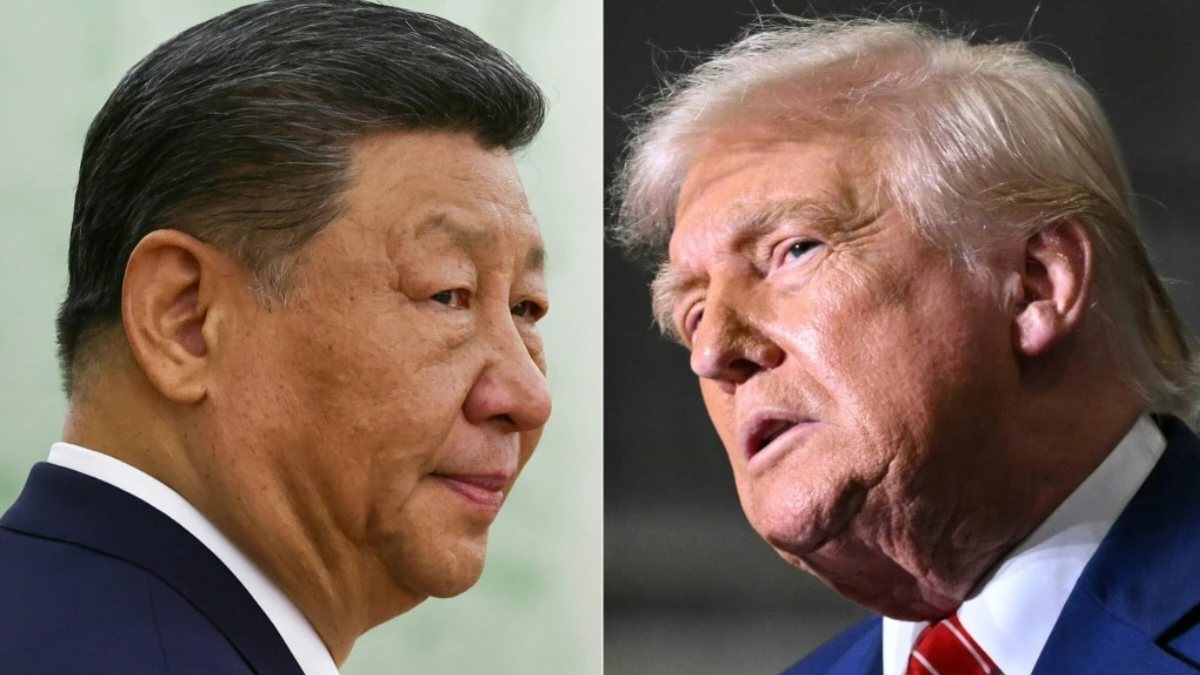GYEONGJU, South Korea — President Donald Trump said Wednesday he expects to sign a long awaited trade deal with Chinese President Xi Jinping during their meeting at the Asia Pacific Economic Cooperation (APEC) Summit, raising hopes of a breakthrough in one of the world’s most consequential economic relationships.
“President Xi of China is coming tomorrow here, and we’re going to be, I hope, making a deal,” Trump said during remarks to business leaders in Gyeongju. “I think we’re going to have a deal, and I think it’ll be a good deal for both.”
The anticipated accord, if finalized, could mark a major de-escalation in years of tariff battles and geopolitical strain between Washington and Beijing that have unsettled global markets and supply chains.
The meeting between Trump and Xi follows months of on and off negotiations aimed at resolving disputes over trade imbalances, intellectual property protections, and market access.
The United States and China have imposed hundreds of billions of dollars in tariffs on each other’s goods since 2018, sparking a trade war that rippled through industries from agriculture to technology.
Both sides have faced mounting domestic pressure to reach an agreement. In the United States, farmers and manufacturers have voiced frustration over disrupted exports and higher production costs.
In China, slowing economic growth and rising youth unemployment have underscored the urgency of stabilizing foreign trade.
Analysts say the timing of the summit is critical. “Both leaders need a win,” said Dr. Michael Han, an international trade analyst at Seoul’s Institute for Global Economics.
“For Trump, it’s about showing economic progress ahead of the US election cycle, and for Xi, it’s about demonstrating China’s ability to manage external challenges without compromising its sovereignty.”
While expectations are high, experts caution that the deal may represent only a preliminary step toward resolving deeper structural issues.
“The agreement is likely to focus on tariff reductions and agricultural purchases rather than the complex questions around technology transfers or state subsidies,” said Karen Liu, a senior fellow at the Center for Strategic and International Studies in Washington.
“This would still be meaningful progress, but it won’t address the core friction points in US China economic relations.”
Financial markets responded cautiously to Trump’s remarks, with Asian stocks rising modestly and the US dollar strengthening slightly. Economists noted that investor optimism remains tempered by uncertainty over the details of any accord.
“Investors have learned to wait for signatures, not just statements,” said Rajesh Menon, chief economist at the Singapore Global Trade Forum. “We’ve seen optimism turn to disappointment before, so traders are watching this summit closely.”
According to US Department of Commerce data, China remains America’s third largest trading partner, with total trade in goods valued at $575 billion in 2024. However, that figure represents a 14 percent decline from pre-trade war levels in 2018.
The Peterson Institute for International Economics estimates that tariffs imposed since 2018 cost the average US household about $1,200 annually, largely due to higher consumer prices. American soybean exports to China, once exceeding $12 billion a year, have yet to return to pre-trade war volumes.
In China, exports to the US dropped by 8.6 percent in 2023, while supply chain diversification by US firms has benefited neighboring economies such as Vietnam, India, and Malaysia. “The global trade landscape has already shifted,” said Liu. “Even a deal can’t instantly reset four years of realignment.”
Business leaders and citizens in both countries expressed cautious optimism about the prospect of a deal.
“I’ve been exporting electronics to the US for 15 years, and every new tariff hit us hard,” said Li Wen, owner of a small manufacturing firm in Shenzhen. “If the deal removes some of those costs, it’ll help us stay competitive.”
In Iowa, farmer Mike Reynolds said he’s “hopeful but skeptical.” “We’ve been promised relief before,” Reynolds said. “If this deal really reopens the Chinese market for soybeans, that would mean everything for us but I’ll believe it when I see it.”
Trade unions have also weighed in, emphasizing the need for enforcement mechanisms. Any agreement must include real accountability on labor and environmental standards, said Susan Delgado, spokesperson for the American Workers Federation. Otherwise, we risk repeating the same mistakes that hollowed out manufacturing towns.
If the trade deal is signed as expected, both governments are likely to frame it as a symbolic turning point rather than a complete resolution. Observers believe the agreement could open the door to further discussions on investment protections, digital trade, and environmental cooperation.
Still, the broader U.S.-China rivalry spanning technology, security, and ideology is unlikely to fade. “A trade deal may calm the waters, but it won’t change the current of competition,” said Dr. Han. “Both nations are repositioning for long term strategic influence, not just short term trade gains.”
The APEC Summit itself has become a stage for broader dialogue on economic resilience and supply chain security in a post pandemic world. Leaders from across Asia and the Pacific have urged cooperation over confrontation.
“The world needs stability,” said South Korean President Yoon Suk Yeol during his address. “When the two largest economies find common ground, everyone benefits.”
As Trump and Xi prepare to meet in Gyeongju, the world watches closely for signs of reconciliation in a relationship that has defined global economics for a generation. Even a modest trade deal could signal a shift toward dialogue after years of tariffs and tension.
For now, optimism remains cautious but tangible. The next 24 hours could determine whether the world’s two largest economies take a step toward cooperation or return to confrontation.

